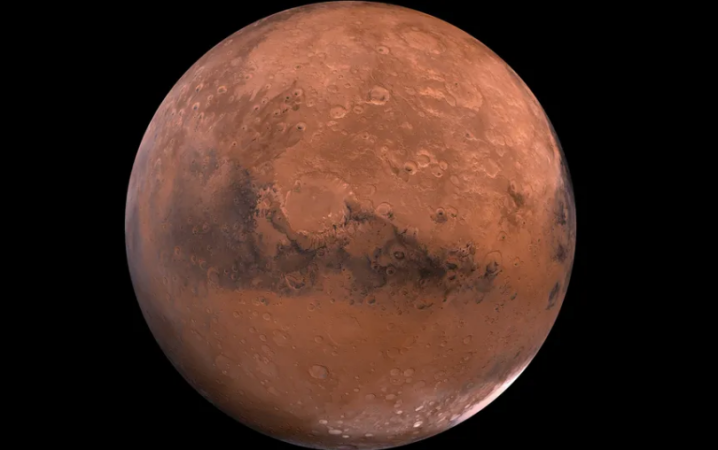Though Mars, known as the Red Planet, is currently a vast and hostile environment, scientists believe that it once bore a closer resemblance to Earth — our own Blue Planet. Specifically, experts propose that Mars may have once experienced a warm and wet climate. This theory is based on dramatic geological formations on the now-arid planet, including extensive valley systems that were likely carved by running water. In fact, new research indicates that Mars may have once experienced not just rainfall but also snowfall.
However, a crucial mystery remains: the origin of Mars' water is still unknown, and most climate models suggest that the planet’s surface temperatures would have been far too frigid to support liquid water. This discrepancy raises important questions about how the observed landforms could have come into existence.
"It’s extremely difficult to draw definitive conclusions," said Amanda Steckel, a postdoctoral fellow in the Division of Geological and Planetary Sciences at the California Institute of Technology. “But we see these valleys starting at a wide range of elevations. It’s hard to justify that solely with ice.”
Steckel and her team utilized computer simulations to explore what Mars may have looked like nearly 4 billion years ago during the Noachian epoch — a time thought to be shaped dramatically by the presence of water. The model they employed was initially built to study Earth’s climate but was modified to represent the Martian landscape, particularly around the equator. In this area, large systems of channels extend from elevated regions and drain into ancient basins — possibly into a prehistoric ocean. NASA’s Perseverance rover is currently investigating one such location, the Jezero Crater, where a once-mighty river emptied into the area.
"To transport and deposit boulders of that size [as seen in Jezero], you'd need meters-deep flowing water," explained Brian Hynek, the study’s senior author and a researcher at the Laboratory for Atmospheric and Space Physics (LASP) at the University of Colorado, Boulder.
Interestingly, evidence of Mars' milder past climate can also be observed in similar geological patterns here on Earth. "You could pull up a Google Earth image of somewhere like Utah, zoom out, and notice the resemblances to Martian landscapes," said Steckel.
The researchers evaluated two primary scenarios for how precipitation could have formed the Martian valleys: one envisioning a warm and wet Mars, and the other proposing a cold and dry climate where ice melted intermittently at the edges of a large polar ice cap.
Each scenario yielded a radically different depiction of early Mars, with the origins of valleys appearing in very different locations depending on the model.
In the ice-melt scenario, valleys primarily formed at high elevations, consistent with the presumed location of ancient ice sheets. While this model may initially align with certain present-day Martian features, the warm and wet model produced valley networks that extended across both low-lying areas and altitudes exceeding 11,000 feet (3,353 meters) above the Martian average elevation.
This latter pattern more closely corresponds to the actual distribution of valley systems observed on Mars, which appear at various elevations and geographical zones. Although the ice-melt model can explain localized features, the warm and wet hypothesis better accounts for the planet’s broader topography. "In the ice-melt model, valleys originate only in a narrow elevation range close to the ice caps," Steckel noted. "But with widespread precipitation, valley heads can develop anywhere."
These findings imply that precipitation likely played a major role in sculpting the Martian valleys, suggesting that ancient Mars experienced a climate warm enough to support rainfall — and perhaps snowfall as well.
While many questions remain, such as how Mars could have maintained temperatures warm enough for precipitation, the research marks progress in understanding the planet’s past. According to Hynek, the study provides insights not only into Mars’ climate history but also into Earth’s early environmental conditions.
"After water-driven erosion ceased, Mars entered a kind of time capsule state and probably still resembles what Earth looked like 3.5 billion years ago," he said.
The research findings were published on April 21 in the Journal of Geophysical Research: Planets.

